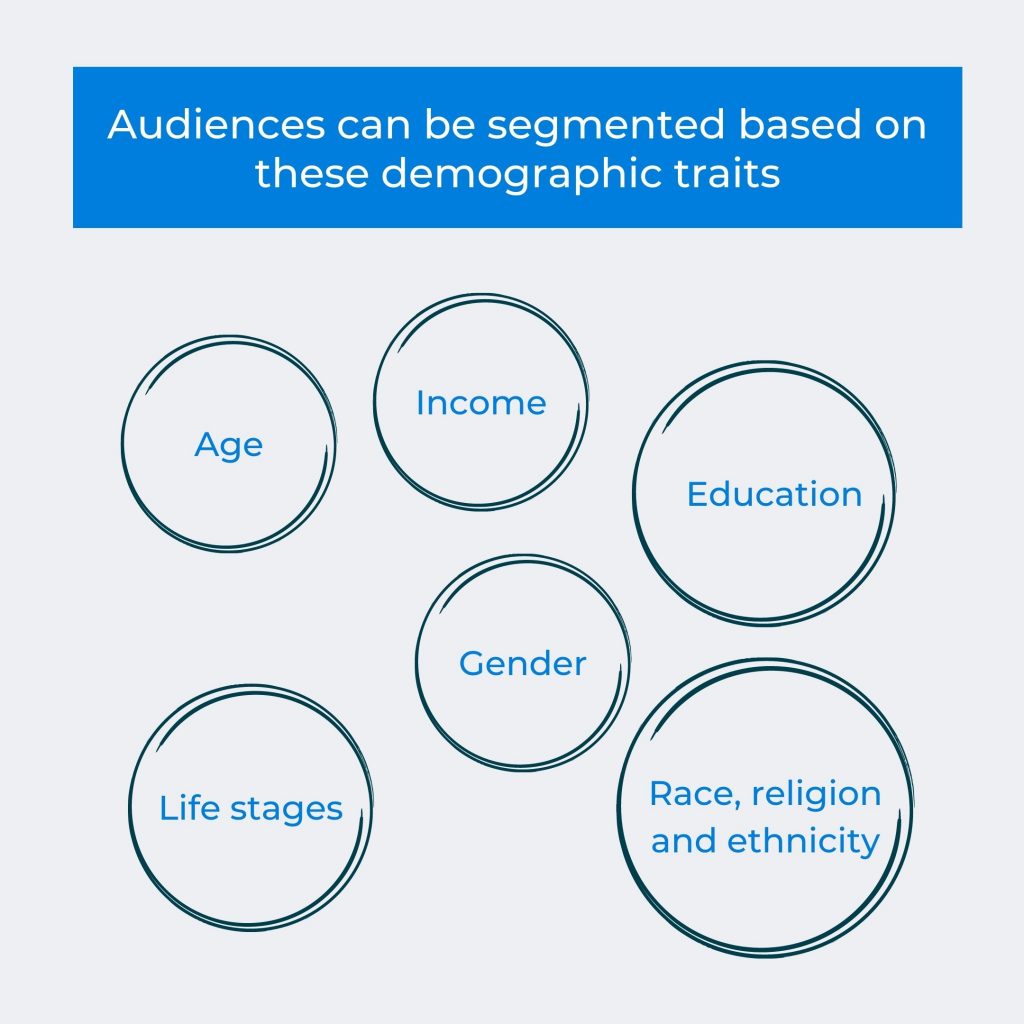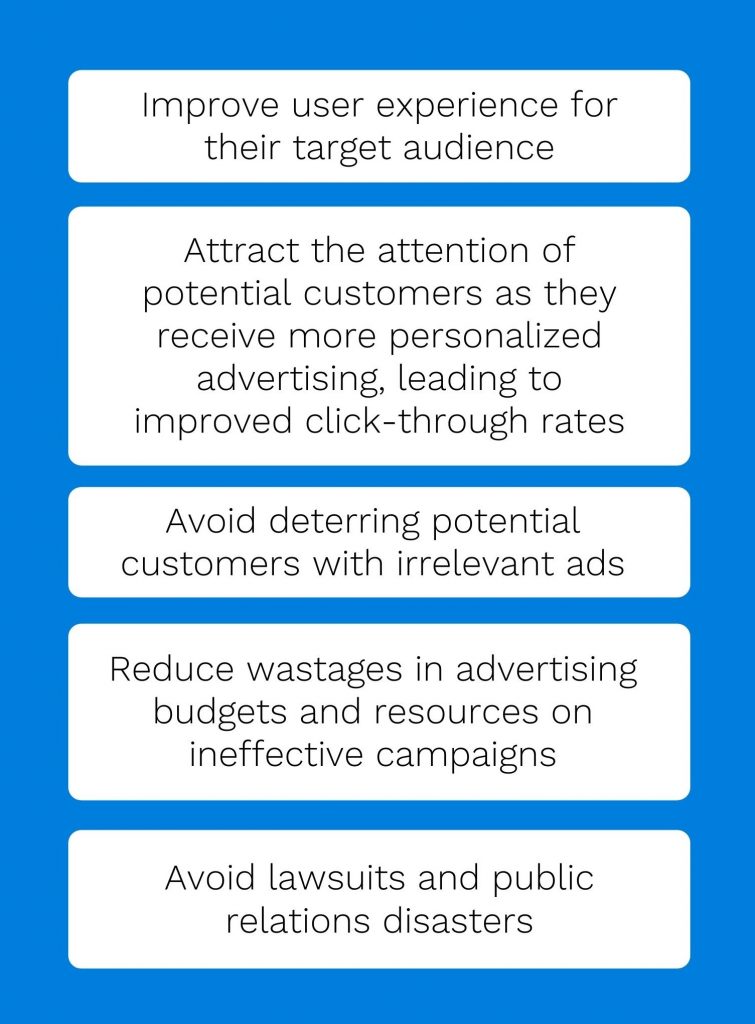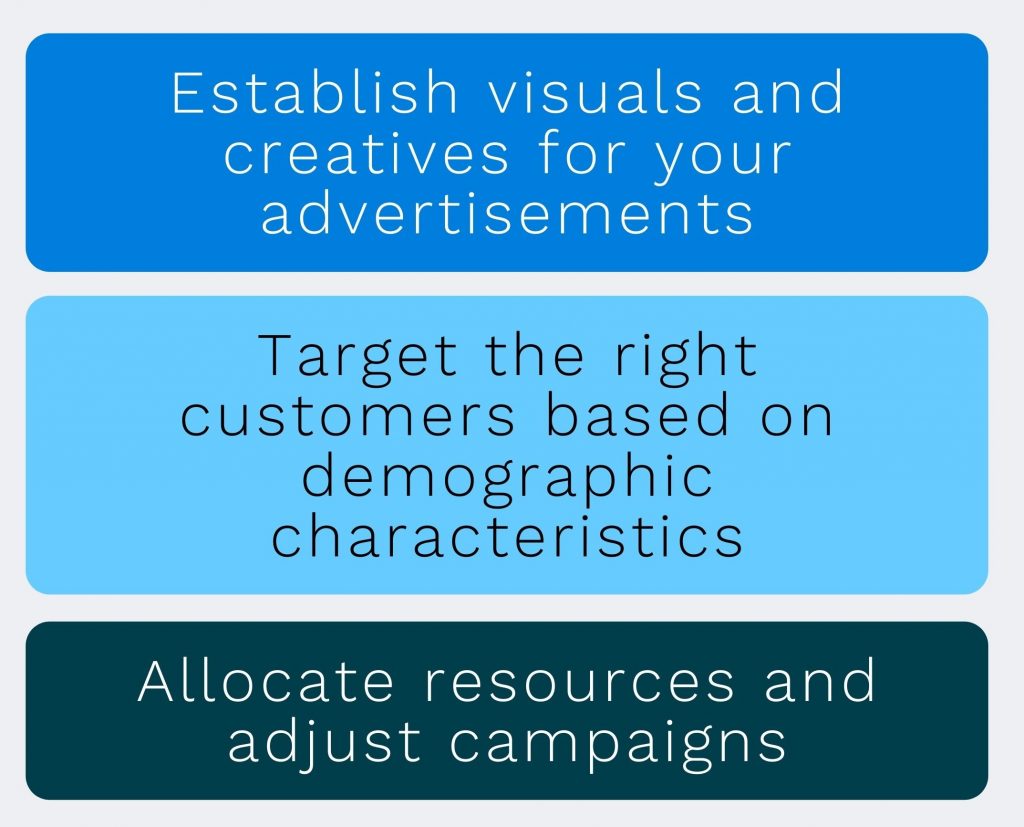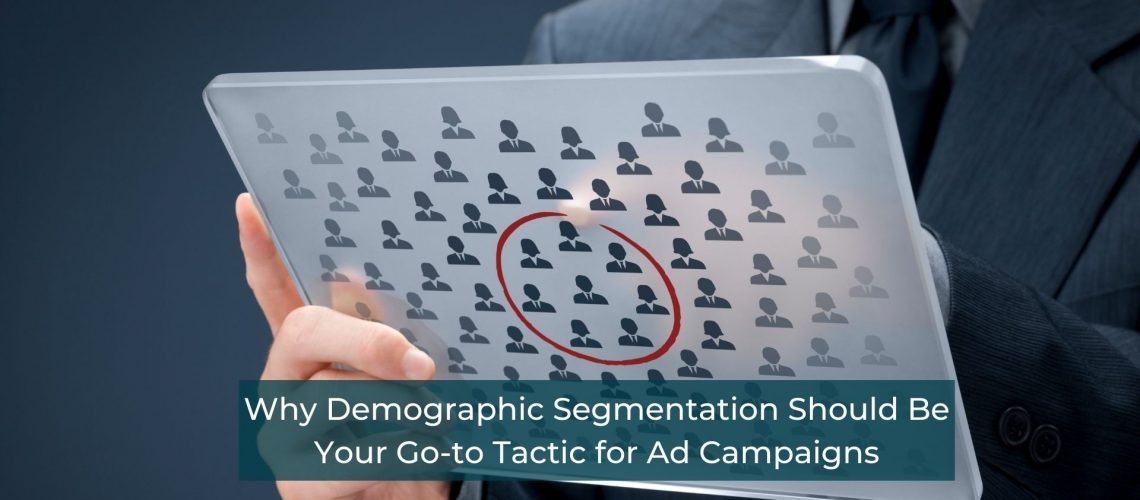What is Demographic Segmentation?
Demographic segmentation is a type of audience segmentation referring to the process of understanding and grouping a target market into various segments based on shared demographic characteristics. Agencies and marketers use demographic segments to identify their target audiences and develop effective advertising campaigns.
Demographic segmentation can be used in conjunction with other types of segmentation to increase its effectiveness.
Related: Use Behavioral Segmentation to Boost Your Programmatic Ad Campaign
Introduction
With 10 million ads being displayed per second, marketers and agencies need to ensure that their data vendor is doing the best possible job for their ad campaigns by providing relevant audience segments. Demographic segmentation is the broadest category within audience segmentation and is usually the first step in planning ad campaigns as it narrows down the potential audience significantly.
In this article, we discuss the different types of demographic segmentation, why it should be a go-to audience segmentation tactic, how demographic data can be used on advertising platforms and how AlikeAudience can help.
Types of demographic segmentation

Age
People belonging to certain age groups and/or generations tend to have similar tastes and spending patterns. For instance, people belonging to the baby boomers generation may prefer simpler products while those belonging to the millennials generation may prefer technologically advanced products.
Gender
Individuals belonging to different genders along the biological male and female spectrum tend to share similar preferences and needs. Marketers and agencies can use this data to target their ad campaigns to the right customers.
Income
The amount of income an individual earns has a direct impact on how much they spend and what they buy. Dividing audiences into segments based on their level of income can be useful in determining which segments are likely to and are able to purchase the company’s products.
Education
Audiences can be grouped together based on their levels and types of education. Education levels can make a difference in how individuals respond to advertisements, what kind of products they find attractive and how they purchase those products.
Life stages
The life stages of customers can greatly influence spending patterns and preferences. For instance, an individual who is a parent is likely to be more conservative with their spendings and more likely to purchase in bulk. On the other hand, a single, working person may be more prone to buy luxury or higher-end products.
Race, religion and ethnicity
Individuals that belong to the same race, religion and/or ethnicity tend to share similar preferences and buying and spending patterns. Learning more about what people prefer or not prefer in certain religions and ethnicities can make a big difference in choosing audience segments to target marketing campaigns.
Why should demographic segmentation be your go-to campaign tactic?
Leveraging demographic segmentation increases the relevancy of a company’s ad campaigns by narrowing target audiences.
As a result, demographic segmentation can help marketers and agencies:

For example, a designer for a high-end, formal line of women’s clothing might use demographic segmentation to only target middle-aged women earning more than a certain amount per year, while a budget airline offering cheap flights at the end of a school year might only target 18 year-olds who have recently graduated high school.
It is important to remember, however, that demographic segments can be overly superficial as people who fit into the same group may have different individual interests. It’s a good idea to combine demographic segments with other types of segments, such as psychographic or behavioral, to improve the effectiveness of ad campaigns. For instance, in the example above, the budget airline could also use psychographic segments to analyze the way that consumer motivations and values affect their purchasing decisions.
Related: The Power of Psychographic Segmentation in Your Campaign
How to use demographic segmentation data on major DSP/DMPs
Once you have the audience segments based on demographic data, marketers and agencies can use this information to set up more relevant advertising campaigns on major demand-side platforms (DSPs) and data management platforms (DMPs). Here are the steps that they can take to do so:

Establish visuals and creatives for your advertisements
The first step in setting up a programmatic advertising campaign is to develop visuals, sounds and content for the advertisements. It’s beneficial to know exactly who your target customers are because you can then match these creatives to their styles, tastes and preferences. For instance, if your company produces modern sneakers for young people, your creatives may be vibrant, interactive and exciting.
Target the right customers based on demographic characteristics
You can target the right customers by setting up their demographic details on your preferred DSP or DMP. Following the above example, one of the audience segments that you could target would be young people who fit the age range of 18 to 25. Once you do this, the DSP or DMP platform can find sites and mobile apps that fit your criteria and make bids for ad placements.
Allocate resources and adjust campaigns
After setting up targeting, you can then devise budgets for each programmatic ad campaign. Based on your budget, you can make bids on ad placements and pay for the bids. You should also continuously track and adjust the performance of your campaigns and invest more resources into campaigns that are doing well or move resources away from those that are underperforming.
Related: How an eCommerce Brand Increases Return on Advertising Spend by 300%
How can AlikeAudience help?
AliveAudience offers pre-built audience segments to activate on open marketplace auctions. We can also help you build custom audiences upon request for activation on major DSPs. With data culled from over 1.1 billion devices globally, our audience segments are accurate, comprehensive and reliable.
AlikeAudience uses a combination of demographic, psychographic, behavioral, transactional and geographic data to ensure optimum targeting. Our most popular demographic segments include segments by ethnicity (size 39.8 mn) and by life stages (size 50.5mn).
Find out more about our audience segments here.
What about privacy?
For marketers and agencies, privacy is one of the most important considerations when selecting data vendors. The latest research shows that a majority of online users today are concerned about eroding personal privacy issues and how their personal data is being used by companies.
AlikeAudience is uncompromising in our standards and processes to protect consumer privacy. Unlike other data vendors, AlikeAudience is not a data aggregator, nor do we use “recycled” data in the marketplace. Instead, we obtain data directly from trusted sources and our audience segments are fully compliant with industry standards such as GDPR and CCPA as well as committing to high privacy standards with integrity.
By working exclusively with consumer consented data and opted-in Mobile IDs that are fully compliant with GDPR and CCPA regulations, we help marketers and agencies achieve high campaign performances.
Read our privacy policy here.
Conclusion
In the article, we’ve covered what demographic segmentation is and why it should be a go-to audience segmentation tactic for targeting customers in ad campaigns. In short, marketers and agencies can use demographic segments to increase the relevancy and effectiveness of ad campaigns.
AlikeAudience’s comprehensive, global segments with flexible lookback windows sourced closely from original, consumer-consented CRM data are available at scale on 17 different platforms. Search for AlikeAudience on Our Partner platforms or contact a Data Strategist today to boost your ad campaigns’ performances.


